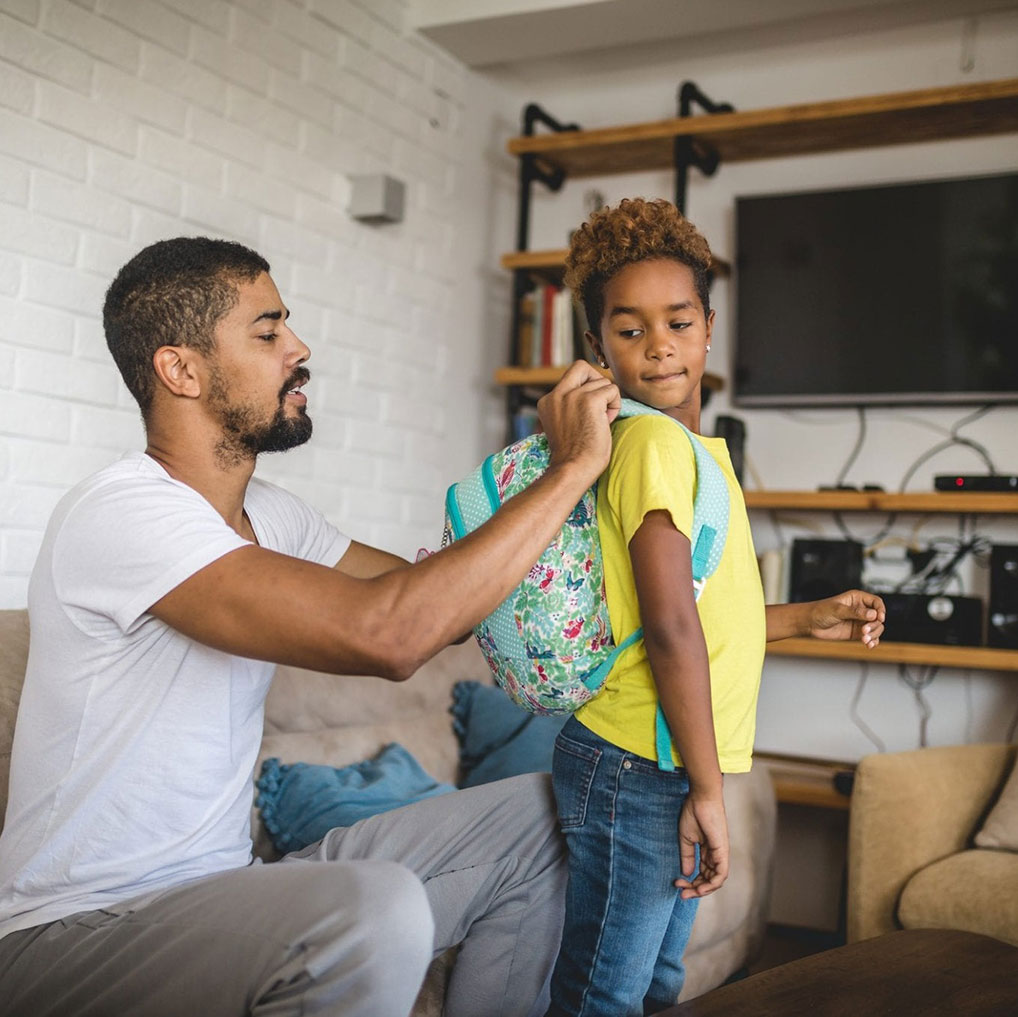Dealing with Child Boredom without Relying on Screen Time

November 08, 2021
Here are some healthy alternatives to help keep the kids entertained:
- Go outside – Whether it’s bike riding, hula hooping, or coloring with chalk it’s important to get some fresh air and get those bodies moving when you can.
- Have them help out around the house – With COVID-19 it’s important to keep frequently touched surfaces clean such as door knobs, light switches and sinks. Turn it into a game and see how many surfaces they can get to while timing it.
- Crafts – Crafting helps kids develop fine motor skills, encourages self-expression and promotes creativity. Have your kids channel their inner Picasso and create the next masterpiece to hang on your new home office wall.
- Now is the time to drag out the Legos and all of the other building block type of activities. Construction play builds spatial skills which are associated with science and technology careers.
- Shake out the board games. Playing board games helps stimulate brain areas that are responsible for memory formation and complex thought processes for all ages.
When all else fails, don’t feel guilty for leaning on screen time a little more than usual during these really unique circumstances. Many educational sites are even putting out more games and content to help bridge these two worlds.
If you need a refresher: According to the American Academy of Pediatrics (AAP) the below are recommendations for screen time for our kids:
- For children younger than 18 months, avoid use of screen media other than video-chatting. Parents of children 18 to 24 months of age who want to introduce digital media should choose high-quality programming and watch it with their children to help them understand what they’re seeing.
- For children ages 2 to 5 years, limit screen use to 1 hour per day of high-quality programs. Parents should co-view media with children to help them understand what they are seeing and apply it to the world around them.
- For children ages 6 and older, place consistent limits on the time spent using media, and the types of media, and make sure media does not take the place of adequate sleep, physical activity and other behaviors essential to health.
- Designate media-free times together, such as dinner or driving, as well as media-free locations at home, such as bedrooms.
- Have ongoing communication about online citizenship and safety, including treating others with respect online and offline.
Research shows that the more time children engage with screens, the harder time they have turning them off as they become older. Currently, over 23% of adults and 80% of adolescents are not physically active according to the World Health Organization. And with that – too much screen time has been linked to: obesity, irregular sleep schedules and shorter duration of sleep, behavioral problems, loss of social skills, violence, less time for play.
Our own team of music therapists at Joseph M. Sanzari Children’s Hospital put together this therapeutic musical experience using a simple and well-known tune. They carefully arranged instrumentation, tempo (or pace) of the song and movement, utilizing vocal toning and deep breathing to promote relaxation, developmental support, anxiety and stress reduction and self-expression.
Find a doctor near me
How COVID-19 Affects Kids Long Term

Learn how COVID-19 impacts children long-term. Discover post-COVID symptoms & find support for your child's recovery. Get expert pediatric care now.
Find a doctor near me

How to Care for a Child With a Seizure Disorder
Learn how to care for a child with a seizure disorder. Dr. Sultan offers expert advice on medication, seizure safety, and triggers. Help your child thrive.

Signs That Your Kid May Be Vaping
Spot vaping signs in your teen? Learn how Drs. Lee and Olorunnisola can help. Get support and resources now. Call 800-822-8905.

Relieving Pain From Heavy Backpacks
A backpack that is too heavy for your child can cause back pain. Our pediatric orthopedic experts share how to prevent this issue and alleviate pain.

What Makes a Child Tic?
Understand child tics? Dr. Khrizman explains causes, management, and when to seek help. Learn more and find support.
